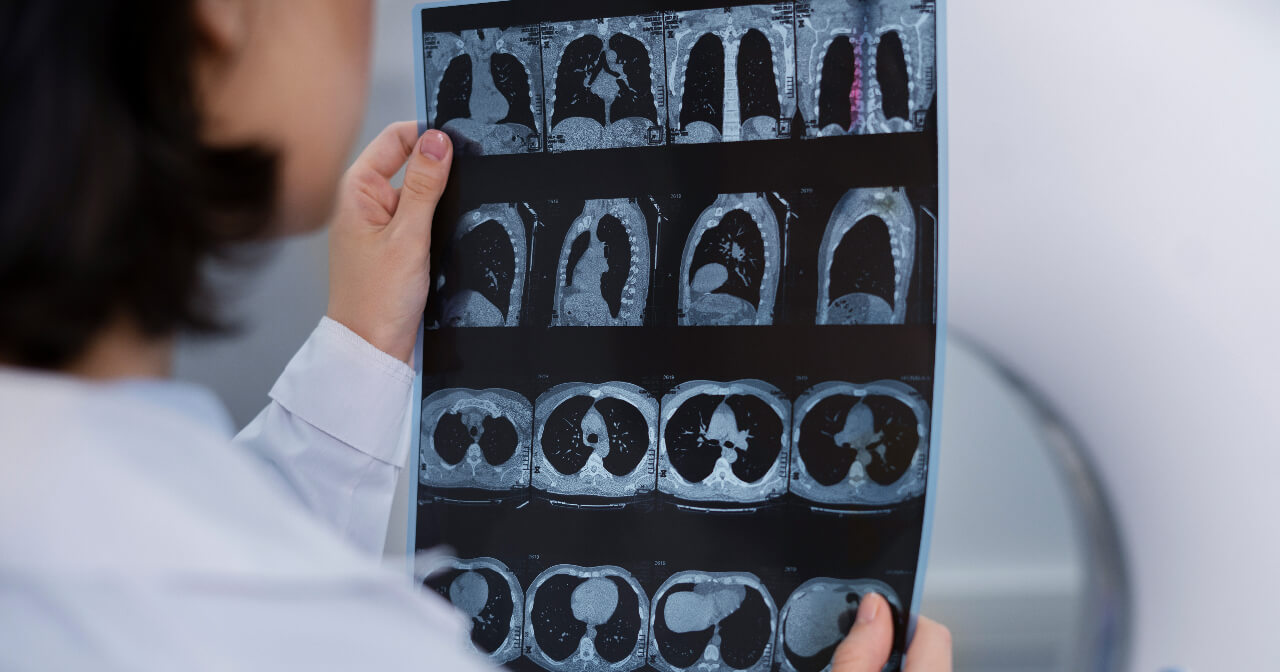
We collect basic website visitor information on this website and store it in cookies. We also utilize Google Analytics to track page view information to assist us in improving our website.

In the ever-evolving landscape of healthcare technology, radiology stands as a crucial pillar, enabling accurate diagnoses and informed treatment choices. As the demand for precision in radiology grows, the importance of fostering an environment conducive to optimal performance becomes evident.
This is where ergonomic workstations step in.
Originally associated with office settings, these workstations have gained prominence in radiology due to their profound impact on radiologists' effectiveness and well-being. Painstakingly designed for comfort and efficiency during extended reading sessions, ergonomic workstations directly influence the accuracy of diagnoses.
Central to radiology's mission is the acquisition and interpretation of medical images. High-quality images empower radiologists to discern subtle anomalies, track disease progression, and recommend appropriate interventions. Conversely, subpar image quality can lead to missed diagnoses, treatment delays, and compromised patient care.
This blog post aims to explore the intricate interplay between ergonomic workstations and radiology image interpretation. By deciphering how workstation design impacts interpretation, accuracy, and efficiency, we uncover a synergy between ergonomic principles and radiology practice. The post will focus on key ergonomic factors that affect image interpretation and offer actionable advice to create ergonomic workstations tailored to the distinctive demands of radiology professionals.
At RedRick Technologies, we design and develop ergonomic workspaces for healthcare professionals that include workstations, monitor mounting solutions, accessories, and peripherals. We also provide ergonomic design services that help organizations implement ergonomic principles for improved space design and functionality. Get in touch and let’s find ways to improve the ergonomic functionality of your workspace.
Ergonomic workstations are purposefully designed setups that prioritize the physical comfort and well-being of professionals during their tasks. In the context of radiology, where precision and focus are paramount, ergonomic workstations play a pivotal role in ensuring that radiologists can perform their tasks with minimal physical strain and maximum efficiency.
Ergonomic workstations aren't just about looks – they're carefully designed to match how our bodies naturally move and sit. This helps prevent discomfort, tiredness, and injuries from sitting for a long time and focusing hard. These workstations make it easier for radiologists to stay focused and think clearly when working, which directly helps them read images accurately and make diagnoses.
Although chairs are necessary in any desk environment, we believe that the best ergonomic practice is to get out of the chair as much as possible. Our bodies are made to move and stand rather than sit. However, given the nature of most work environments, that is not always possible. To combat this, ergonomic chairs are designed to provide proper lumbar support and adjustability to accommodate individual preferences and body types. This ensures that radiologists can maintain a neutral spine position, reducing the risk of back pain and discomfort during long reading sessions.
The ability to adjust the desktop height to accommodate all body types whether sitting or standing is one the three critical components of an ergonomic workstation. This ensures that shoulders, arms and wrists are in neutral positions when using keyboards, mice and other workflow related devices.
The position of the monitor is critical to prevent strain on the neck and eyes. The top of the screen should be at or just below eye level, and the monitor should be positioned at a comfortable distance to avoid unnecessary eye strain and fatigue. An ergonomic workstation suitable for radiology reading rooms will provide easy adjustment of the entire monitor set simultaneously for height relative to the mouse and keyboard surface and forward/back for preferred focal distance.
Adequate lighting is essential for clear image visualization and preventing eye strain. This is best achieved using a dimmable light source that is behind the monitors, positioned at the level of the desktop and illuminating up towards the ceiling casting a glow on the wall behind the workstation with some light reflecting back down from the ceiling. This creates an illuminated visual field surrounding the monitors. By balancing the illumination from the monitors and the surrounding visual field, visual acuity can be increased and eye fatigue decreased.
The radiologist's ability to identify even the most subtle abnormalities, pinpoint intricate structures, and make informed diagnoses is contingent upon the clarity, detail, and fidelity of the images they interpret. As a result, image quality isn't just a preference; it is an absolute necessity for accurate diagnosis and effective treatment planning.
The consequences of poor image quality within radiology are far-reaching and can have a domino effect on patient outcomes. Images marred by artifacts, distortion, or inadequate resolution introduce uncertainty and ambiguity into the diagnostic process. This ambiguity, in turn, can lead to misinterpretations, misdiagnoses, and misguided treatment plans.
A misdiagnosis resulting from suboptimal image quality may lead to delayed treatments or unnecessary procedures. Conversely, a missed abnormality could mean that a patient's condition progresses unchecked, impacting prognosis and complicating subsequent interventions. Treatment errors rooted in misinterpreted images can result in patient harm, compromised health, and potentially even legal ramifications.
The integral connection between ergonomic workstations and effective image interpretation in radiology cannot be emphasized enough.

Radiologists act as modern detectives, constructing intricate medical narratives from visual cues. Yet, the environment profoundly impacts the accuracy and efficiency of their work. Ergonomic workstations provide the backdrop for this critical performance, influencing radiologists' cognitive abilities and, consequently, patient care.
Comfortable workstations and reduced strain are not mere indulgences but prerequisites for unwavering focus and mental clarity. Radiologists undertake prolonged reading sessions amidst complex images. Ergonomically designed workstations ensure comfort, minimizing physical strain and fatigue. This preserves mental energy for the core task—unraveling image intricacies.
Addressing eye strain is pivotal for enhanced concentration. Radiologists invest intense focus in scrutinizing images, and ergonomic workstations consider monitor placement, lighting, and glare reduction. Proper monitor positioning and lighting alleviate eye strain, enhancing interpretation accuracy.
Beyond comfort, well-designed ergonomic workstations foster a cognitive environment. Radiologists require an immersive mental zone for deep concentration. Customized ergonomic setups minimize distractions and discomfort, enabling radiologists to fully engage in image interpretation. This immersion heightens the ability to detect subtle anomalies and make accurate judgments, ultimately elevating the quality of radiology practice.
In radiology, small details matter a lot. Even tiny things can affect how we understand medical images. When radiologists improve how they work and set up their environment, they can get better at reading images and diagnosing patients. This helps improve patient care.
Proper monitor placement, including aligning them at eye level to avoid neck strain and ensuring adjustable height and tilt, is critical for image clarity, preventing distortion, and optimizing visual comfort in accurate radiology interpretation.
Effective lighting is pivotal in radiology, affecting image contrast and visibility; maintaining proper lighting conditions, including adjustable task lighting and ambient back lighting, minimizes eye strain, and enhances image clarity by maintaining a balance of illumination in the visual field and preventing reflections.
Organizing a radiology workstation with easily accessible tools and a well-thought-out layout enhances workflow efficiency by minimizing interruptions and unnecessary movements, allowing radiologists to maintain focus on image analysis while ensuring smooth transitions between tasks.
Creating an ergonomic workstation tailored to the unique demands of radiology professionals means preparing conditions for accurate image interpretation and minimizing physical strain.
Here are practical tips and insights to guide the implementation of ergonomics in radiology workstations:
Position monitors at eye level to prevent neck strain. The top of the screen should be at or just below eye level, ensuring a comfortable viewing angle. Adjust the monitor distance to maintain a clear focus without straining the eyes.
Ergonomic workstations for radiologists include adjustable chairs that provide proper lumbar support and individual adjustability, promoting a neutral spine position and reducing back pain during long reading sessions.
Sit/stand desktops are crucial for accommodating various body types and maintaining neutral positions for shoulders, arms, and wrists while using keyboards and mice.
Proper monitor placement is essential to prevent neck and eye strain, with monitors positioned at eye level and a comfortable distance to reduce eye fatigue.
Adequate lighting from dimmable sources behind the monitors helps enhance image visualization and reduce eye strain, creating a balanced illuminated visual field for improved visual acuity and decreased eye fatigue.
Encourage radiologists to maintain a neutral posture with feet flat on the floor and knees at a 90-degree angle. Elbows should rest comfortably on armrests, and wrists should be in a neutral position while typing and using the mouse.
Ensure a combination of ambient and task lighting to eliminate glare on monitors and minimize eye strain. Adjustable lighting sources help radiologists control illumination based on their preferences and the time of day.
Arrange frequently used tools, such as keyboards, mice, and diagnostic software, within arm's reach. Keep the workstation clutter-free to reduce unnecessary movements and distractions.
The symbiotic relationship between ergonomic workstations and radiology image interpretation is undeniably integral to the realm of modern healthcare. As radiologists navigate the complexities of medical imagery to guide diagnoses and treatments, the role of ergonomics in optimizing their work environments cannot be underestimated.
At RedRick Technologies, we design and develop ergonomic workspaces for healthcare professionals that include workstations, monitor mounting solutions, accessories, and peripherals. We also provide ergonomic design services that help organizations implement ergonomic principles for improved space design and functionality. Get in touch and let’s find ways to improve the ergonomic functionality of your workspace.